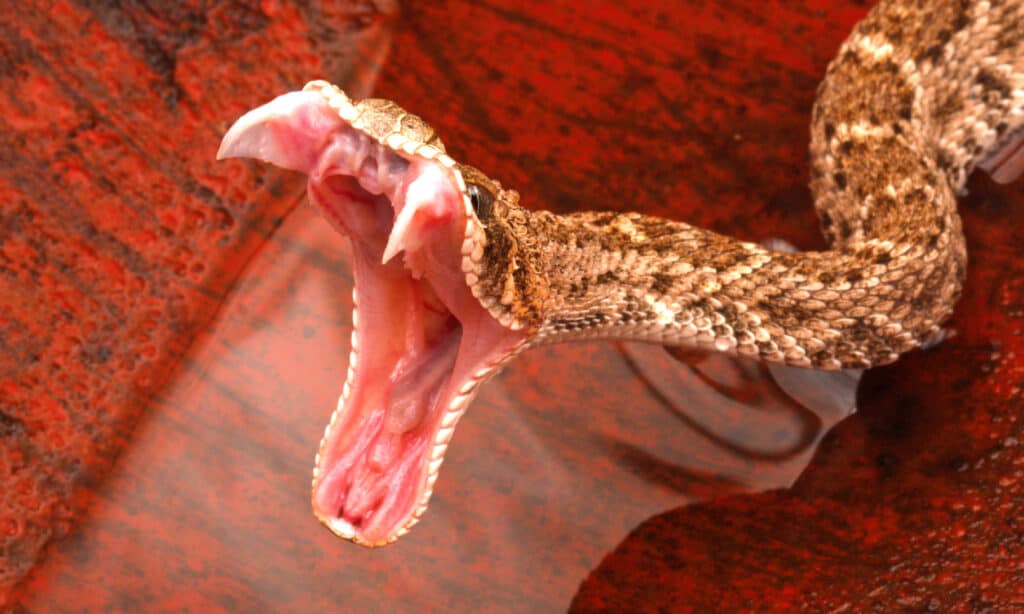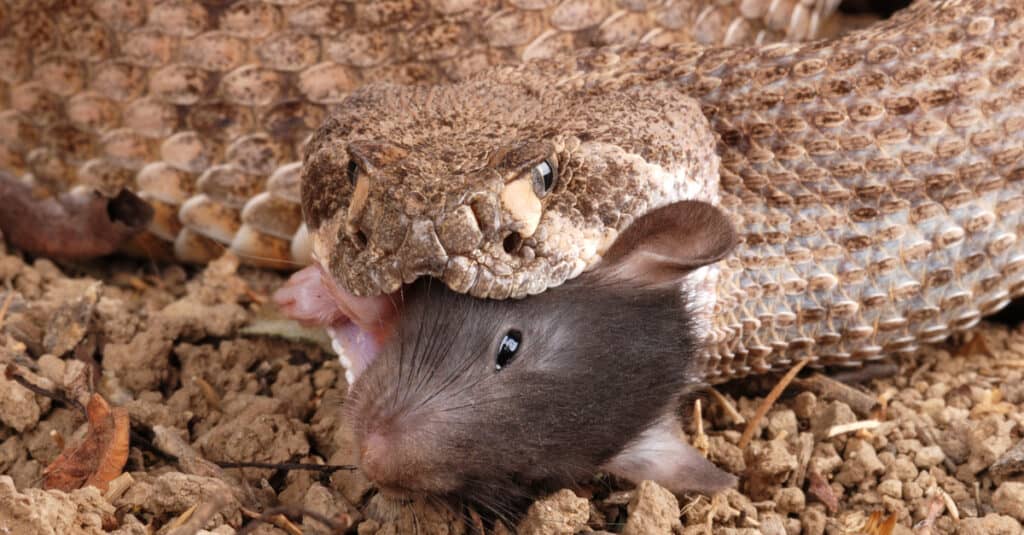Kayaking is an exciting sport but you would expect most of the excitement to be water-related and not to take place before you’ve even got in it! As the video below shows, removing rattlesnakes from inconvenient locations is best left to the experts.
Watch the Heart-Stopping Video Now!
Is It Normal Behavior For Rattlesnakes To Hide Under Kayaks?
We hear from a member of the snake relocation team that the rattlesnake in this clip was originally discovered inside a house. The weather had been fine and the homeowner had left a door open. The rattlesnake has seized the opportunity and sneaked in. We hear that this is a common occurrence when the weather is warm and doors and windows are open.

Rattlesnakes are relatively easy to identify.
©iStock.com/johnaudrey
By the time the snake expert gets there, the snake has moved outside and taken up a position under a kayak. The snake is expertly and humanely captured and released back into the wild in an appropriate location.
It is perfectly normal behavior for this snake to seek out shelter. They are considered a ‘generalist’ when it comes to places to hang out. So, they can be found in anything from deserts through grassy plains, forests, and rocky hillsides and even in coastal areas. They are found at elevations up to 6500 feet.
Diamondbacks like to spend hot days coiled up in the shade created by low-growing shrubs and piles of debris or rocks. To them, a kayak does exactly the same job!
What Do Western Diamondback Rattlesnakes Normally Eat?
This householder was clearly concerned about sharing their home with a western diamondback rattlesnake. They did the right thing by calling in the experts.

Western diamondback rattlesnakes feed on mice, rabbits, squirrels, woodrats, birds, and lizards.
©Audrey Snider-Bell/Shutterstock.com
Their diet is made up of small animals and that includes mice, woodrats, rabbits, and squirrels although they may also target birds and lizards. Their venom is used to catch prey and for defense. They do not attack humans unless they are disturbed and feel threatened but be warned that it is quite easy to make them feel threatened!
Their venom is harmful to humans but is not as deadly as that produced by some other snake species. These guys produce a hemotoxic, myotoxic, and cytotoxic venom that affects the blood, heart system and the body muscles. They give a warning rattle before striking, as we hear in this clip, and if you have any sense you will heed that warning!
The photo featured at the top of this post is © iStock.com/Banu R
Discover the "Monster" Snake 5X Bigger than an Anaconda
Every day A-Z Animals sends out some of the most incredible facts in the world from our free newsletter. Want to discover the 10 most beautiful snakes in the world, a "snake island" where you're never more than 3 feet from danger, or a "monster" snake 5X larger than an anaconda? Then sign up right now and you'll start receiving our daily newsletter absolutely free.
Thank you for reading! Have some feedback for us? Contact the AZ Animals editorial team.






